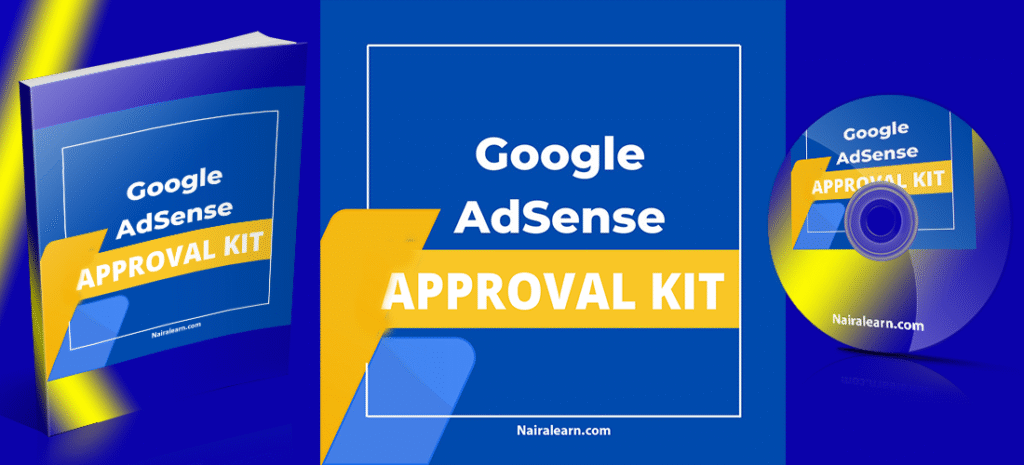POLITICS
How to Get Google AdSense Approval for a New Blog

Google AdSense remains one of the most effective and popular advertising networks for monetizing websites and blogs. Compared to many other CPC (cost-per-click) programs, AdSense offers significantly better performance — often yielding the highest click-through rates (CTR) and daily revenue for publishers. It’s no surprise that every new blogger dreams of getting AdSense approval.
However, getting accepted into the AdSense program has become increasingly challenging due to stricter policies and approval requirements. Many applicants are rejected simply because they’re unaware of these standards. The good news? With the right approach and preparation, getting AdSense approval for a new blog is absolutely achievable.
My Experience with AdSense
When I first applied for AdSense, my application was rejected. But after making the necessary improvements and following some key guidelines, I successfully received approval. That inspired me to share the essential steps to help others achieve the same.
Preparing Your Blog for AdSense Approval
1. Ensure Your Blog Meets AdSense Requirements
AdSense reviewers prioritize websites that demonstrate quality and completeness. Before applying, make sure your blog meets the core eligibility criteria. While there are some region-specific rules—such as the suggested 6-month domain ownership for countries like India and China—the real focus is always on quality.
2. Create High-Quality, Original Content
You’ve heard it before: “Content is king.” Quality content is non-negotiable. Your blog posts must be:
- 100% original (no copy-pasted material)
- Informative and well-structured
- At least 500–600 words in length (preferably more)
Avoid shortcuts like short-form or duplicate content. If your articles lack depth, clarity, or uniqueness, your application is likely to be rejected.
3. Optimize Each Post for SEO
Search engine optimization (SEO) plays a crucial role in helping AdSense bots evaluate your content. Make sure every blog post includes:
- A meta title (up to 69 characters)
- A meta description (up to 156 characters)
- Relevant keywords used naturally
- Clear heading structures (H1, H2, H3)
If you’re using platforms like WordPress or Blogger, refer to platform-specific SEO guides to ensure everything is optimized.
4. Publish Sufficient Content
While Google doesn’t specify an exact number of posts, it’s generally recommended to have at least 15–30 high-quality posts published before applying. Every category and page on your blog should contain multiple posts—ideally 3–4 per section—with no blank or placeholder pages.
5. Domain Age Consideration (Especially for India & China)
Officially, AdSense recommends a 6-month-old domain for applicants from certain countries. However, this isn’t a strict rule. Many bloggers have successfully gained approval with newer domains—sometimes less than 2 months old. Again, content quality matters more than age.
6. Apply with a Root Domain
Always apply using your root domain (e.g., yourdomain.com) rather than a subdomain (e.g., blog.yourdomain.com). This adds credibility and increases your chances of approval.
7. Use Legal, Royalty-Free Images
Using copyrighted images is a common reason for rejection. Never use images found randomly on the internet unless you’re sure they are free to use. Instead, rely on resources like:
- Flickr Creative Commons
- Free image libraries like Unsplash, Pexels, or Pixabay
Make sure to check the licensing terms and give proper attribution where required.
8. Design a Clean, Professional Blog Layout
Your site’s appearance matters. Ensure a neat, user-friendly structure with:
- A clear header
- Organized content area
- Functional sidebar
- Visible navigation menu
- Footer with essential links
Choose a responsive and visually appealing template that enhances user experience. A professional design not only attracts visitors but also impresses AdSense reviewers.
9. Verify That Your Blog Is Indexed by Google
To check if your blog is indexed by Google, search:
makefileCopyEditsite:yourdomain.com
If your pages appear in search results, your blog is indexed. If not, your site might be blocked or deindexed—this must be resolved before applying to AdSense.
10. Avoid Prohibited Content
AdSense strictly forbids certain types of content. Make sure your blog does not contain any of the following:
- Adult or sexually explicit content
- Copyright-infringing material
- Drugs, alcohol, or tobacco-related content
- Hacking, cracking, or illegal software
- Violent or hateful material
- Content promoting weapons
Review AdSense’s program policies thoroughly to stay compliant.
11. Website Traffic Is Not a Primary Requirement
Contrary to popular belief, traffic is not a key factor for AdSense approval. The focus is entirely on content quality and site compliance. However, to generate meaningful revenue from AdSense, attracting consistent traffic is essential post-approval.
Applying for Google AdSense
Once your blog meets all the requirements mentioned above, you can confidently apply for AdSense. Before doing so, you might find the following resources useful:
Final Thoughts
Getting approved by Google AdSense is no longer as difficult as it once was—if you follow the right steps. Focus on creating original content, optimizing your site for SEO, and presenting a clean, user-friendly design. If you have any questions or need help with your blog, feel free to reach out.
If you found this guide helpful, please share it on social media to help others who are working toward AdSense approval.
Discover more from Asiwaju Media
Subscribe to get the latest posts sent to your email.
-

 ENTERTAINMENT6 days ago
ENTERTAINMENT6 days agoFrank Edoho Confirms Split From Second Wife Sandra Onyenuchenuya
-

 NEWS6 days ago
NEWS6 days agoMan Heartbroken As Girlfriend Of 2 Years Denies Him During Interview With YouTuber Asherkine At UNN
-

 ENTERTAINMENT6 days ago
ENTERTAINMENT6 days agoNollywood Mourns As Actor And Producer Kayode Peters Reportedly Passes Away In Canada
-

 POLITICS5 days ago
POLITICS5 days agoChristian Asaga Nwali Bags Award for Contributions to Community Development
-

 SPORTS7 days ago
SPORTS7 days agoAbakaliki FC Faces Kwara United Today in Federation Cup Final
-

 ENTERTAINMENT6 days ago
ENTERTAINMENT6 days agoUNN Student Becky Breaks Silence, Denies Claims Of Boyfriend Denial After Viral Outing With Asherkine
-

 NEWS7 days ago
NEWS7 days agoPhilanthropist Christian Asaga Nwali Commissions Bungalow for Elderly Widow in Ikwo
-

 POLITICS6 days ago
POLITICS6 days agoSenator George Akume Resigns as Secretary to the Government of the Federation
-

 ENTERTAINMENT2 days ago
ENTERTAINMENT2 days agoShocking! Davido Accused of Secret Dealings That Could Ruin His Career
-

 SPORTS6 days ago
SPORTS6 days agoAfonja Warriors Spice Up the Final, Leave Rice Boys with an Empty Bowl
-

 CAMPUS REPORTS6 days ago
CAMPUS REPORTS6 days agoKaduna, SMEDAN Launch ₦1 Billion Fund to Power Small Business Growth
-

 INSIDE NYSC6 days ago
INSIDE NYSC6 days agoOba Elegushi Graces NYSC Cultural Carnival in Lagos, Platoon 4 Emerges Winner




























